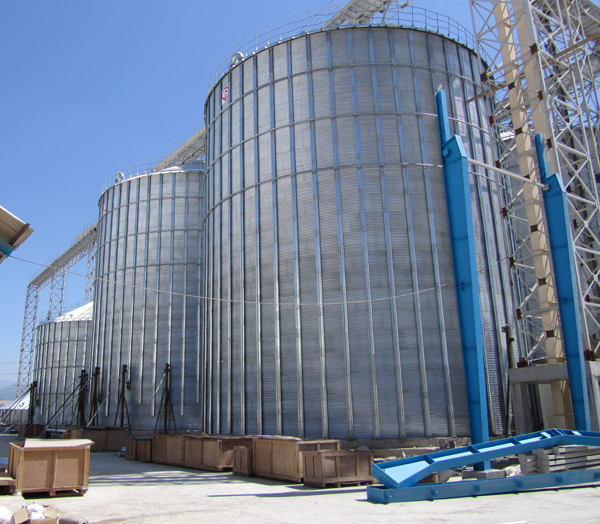The principle components of the test station consist of a steel silo for storing the material to be tested and another, experimental silo containing the instrumentation necessary for measuring the actions of the stored material. The stored material is transferred between both silos using two screw conveyors powered by electric motors.
The geometry and dimensions of the test silo are shown in Figure 2. The silo is cylindrical, with a central hopper and a roof at the top. The silo body (a vertical cylinder), the hopper and the roof are independent and can be dismantled.
The storage silo walls were constructed from sheets of stainless steel 3 mm thick, whilst the cylinder, hopper and roof reinforcement rings were 50 mm wide and 10 mm thick. Given the dimensions and the type of material used for the walls, the silo can thus be considered a rigid, smooth-walled steel silo. According to the Euro code classification, it corresponds to a slender silo, since the cylinder height/diameter ratio is equal to 2 (hc/dc =2).
To measure normal wall pressures, a vertical generatrix was located on the cylinder wall, along which 7 readings were taken at the different heights indicated in, whilst hopper pressures were measured immediately below the grain storage silo hopper transition, at the prolongation of the generatrix mentioned above for measuring cylinder pressures.
Double bending beam load cells were used to measure normal wall pressures. For this, 150 x 150 mm openings were made in the wall, into which panels of the same curvature were inserted, leaving a small gap around the edges.

No comments:
Post a Comment